Joshiraku 11 – notes and the like This entry was posted by Vale.
I’ve been horribly busy recently, that’s why all the notes are so late. Don’t worry, I’ll eventually write them all.
On a related note, the other week when I was in Tokyo on a metal fest, the next day I went to the Suehirotei in Shinjuku, the rakugo theater where the Joshiraku girls work according to the story. If you know enough Japanese to appreciate rakugo, you should totally go. Unlike in the Asakusa Engei Hall, in the Suehirotei they really focus on comedy and mostly on rakugo. In the few hours I could enjoy the performances, there were maybe just one manzai duo, a magician and a koto player, but even they accompanied their performances with hilarious monologues. I don’t recall any of them actually saying お後がよろしいようで (oato ga yoroshii you de, in our translation “thank you kindly for your attention”).
The Japanese word for holidays is バカンス (bakansu, from the French vacances), and she puns on that it has バカ (baka, stupid) in it.
The title of the episode (親子芝居, oyako-shibai) is a reference to the rakugo story 権助芝居 (gonsuke-shibai). It’s about a village boy who ends up acting in a play and messing up really, really bad. The central joke is kinda similar to breaking the fourth wall.
Apparently some people made whole websites on the topic, but I couldn’t bother to look it up.
There are, but they’re only used in anime and cosplay for most of it. As far as I know no schools ever used it.
I wouldn’t be surprised if those swimsuits and uniforms were references to other anime. If you recognize any, please do tell me.
In Japan schools are ranked by academic performance based on the 偏差値 (hensachi, lit. standard score, in this context a performance indicator number). I don’t think it’s used anywhere outside Japan, and to be honest I have no idea how it’s calculated.
Japanese are really critical about their educational system. When it was really harsh and performance-oriented, that was the problem, and now that there’s close to no competition or challenge (this is what they refer to as ゆとり教育 (yutori kyouiku, loose education)), that’s the problem.
There’s a children’s song with a line saying that.
Sakai as in Musashi-Sakai. The Japanese title, 五人さかい (gonin-sakai) is a reference to the rakugo story 五人廻し (gonin-mawashi). In this case mawashi refers to an old prostitute practice when dealing with multiple customers. The story is similarly vulgar.
That’s a textbook Shaft head tilt for you.
It’s just as Gan says. Getting to Musashi-Sakai can be quite a challenge if you don’t know where you’re supposed to change trains. I just know, I lived in that area for a year. This whole part bring back so many memories (though actually I haven’t been there yet since they finished the reconstructions). Mitaka and Kokubunji are also nearby stations on the Chuo line, and so is Kichijouji mentioned back in episode 3 (you can see it on one of the signs when Kigu’s on the wrong platform).
Indeed they did, back in episode 6.
It’s quite an accurate portrayal, most of the stores are in place too. There’s a Sukiya I often visited at the other end of the street.
This is a reference to the あいさつの魔法 (aisatsu no mahou, “the magic of greetings”) CM that was launched after last year’s earthquake to improve the community spirit.
The Seven Days of Fire from Nausicaä.
From the North (北の国から kita no kuni kara) was a real TV drama.
The street is named after Kunikida Doppo, but it’s really written with the characters of “walking alone”. A true Boulevard of Broken Dreams, isn’t it? (I phrased Kukuru’s lines in reference of that song too.)
A reference to the NHK educational program できるかね (dekiru ka ne, roughly: Can we do it?). Kigurumi’s dressed up as Noppo, Gan as Gonta, both from that show.
Teto’s referring to Mutsuki Kagerou’s porn romantic novel, not Doppo’s quite tragic, gloomy work of the same title.
The shop is called 珍珍亭 (chichintei). In Japanese chinchin can mean “penis” (that’s why Kigu’s embarrassed), but it also means “to beg” (for example a dog begs) and as an onomatopoeia it also refers to jingles and the street tram (which also jingles) pictured later. The train pictured is the Enoshima Dentetsu 300-305, that also appeared in Tari Tari and Milky Holmes too. To get the lewdness of the joke through, I had to change it to “dong”. This got troublesome when Gan refers to the Italians’ way of saying cheers, which is also an onomatopoeia. I couldn’t find a way to save that joke, thus it became the reference to the Vietnamese currency.
The restaurants she mentions are all real. Past tense in GT’s case.
She’s reading the monthly version of the Shounen Magazine.
The Osaka edition is actually called Honmaya (ほんまや, Osaka dialect for “really”, thus Yarly). Actually in this year’s January production was stopped once due to it being utterly unprofitable (at least there are reports of the Osaka mayor ordering the production to stop), but then in July they sent thousands of bottles as aid to the north struck by the earthquake.
The artist of B-gata H-kei did. As for entering the Asia University like Teto says, it’s a real possibility.
The Tamagawa line is operated by Seibu. It’s quite a minor line, but it’s important for foreign students in Tokyo, because the University of Foreign Studies is at this line’s Tama station.
Yep, that building houses the headquarters of JC Staff.
A horrible pun on Christmas (クリスマス kurisumasu) and “suffer” (苦しみます kurushimimasu (polite form)).
The Japanese title (ツリー惨事 tsurii sanji) is a reference to the rakugo story 穴釣り三次 (anazuri sanji, a name in the story, literally meaning “ice fishing thrice”).
I would be very surprised if someone didn’t recognize this (KFC).
A pun on Christmas (クリスマス kurisumasu) and chestnut (栗 kuri). The tank is the Type 61 from the opening animation.
This time マス (masu), that wooden block is the other half.
Rudolf.
It’s an obvious reference to Amazon. As clearly obvious, the logo doesn’t say “Amazon” though, it’s みつりん (mitsurin (密林), which means jungle). The girls’ recommendations are as follows:
- Teto: Introduction to Rakugo, Extreme Ironing, Extreme Sixth Sense, Proverb dictionary, Pun collection
- Marii: sweater jacket, beer set, training pants, striped panties (was she wearing shimapan before?), school swimsuit
- Kigu: The flood to the world (probably a reference to Marilyn Manson’s album), Innocent slaughter (probably a reference too, but I don’t know what), (something) Royal Palace (judging from the cover, could be an Iron Maiden reference), The party of madness (maybe Shinedown’s The Sound of Madness?), A Sweet Invitation (no idea what this could refer to)
- Kukuru: Sunshine of the Heart, How to get along with yourself, Super Ultra Soul Pill Royal Gold, Introduction to watercolor painting (I couldn’t figure out what’s behind her back)
Gan said the exact same thing about her swimsuit in part A.
She’s telling the story of the Rudolf the Red Nosed Reindeer song.
All the puns are about 話し合う (hanashi-au, talk) and 鼻 (hana, nose).
This 光のもとへ! (hikari no moto he!) might be a reference, but I don’t get it.
If you watched this whole series and still don’t know who Ebizou is, you’re doing something wrong.
Rambo vs Predator. A frighteningly real possibility. (The Aliens have green blood.) Kukuru’s scene is a reference to Apocalypse Now.
From Ruggero Deodato’s Last Cannibal World (1977). I haven’t seen the movie and I couldn’t find the tribe’s name anywhere in English, so I just translated it from Japanese.
Her 大義を得たり (taigi wo etari) is probably a reference too, but again I couldn’t find the original.
The specific fried chicken he refers to is the Karaage-kun by Lawson (also, in countryside Japan it’s common that the 24/7 open convenience stores are the only source of light in the night). The Don Quibocchi is a reference to the retail chain Don Quijote. The guy following Kukuru’s ghost is probably Inagawa Junji, a famous ghost story teller. The “warrior of the light” is Haraguchi Kazuhiro, a much-criticized Japanese Democrat. The CEO is Softbank’s CEO Son Masayoshi, who’s connected to Haraguchi and his plan of the nationalized upgrade of all Japanese communication lines to light fiber. Tanaka and Oota Hikari are a manzai duo (named 爆笑問題 bakushou-mondai).
One of the next episodes…
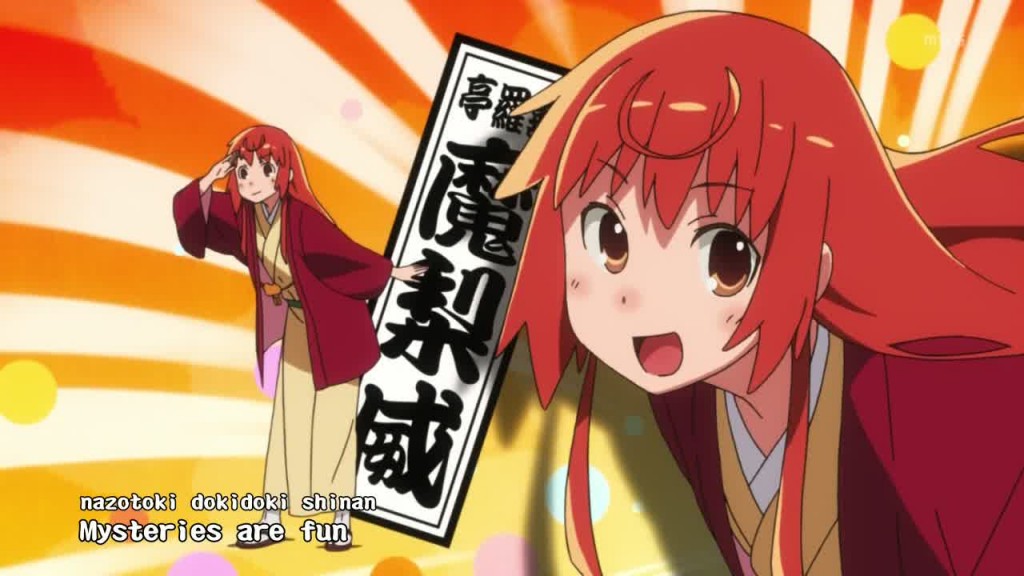
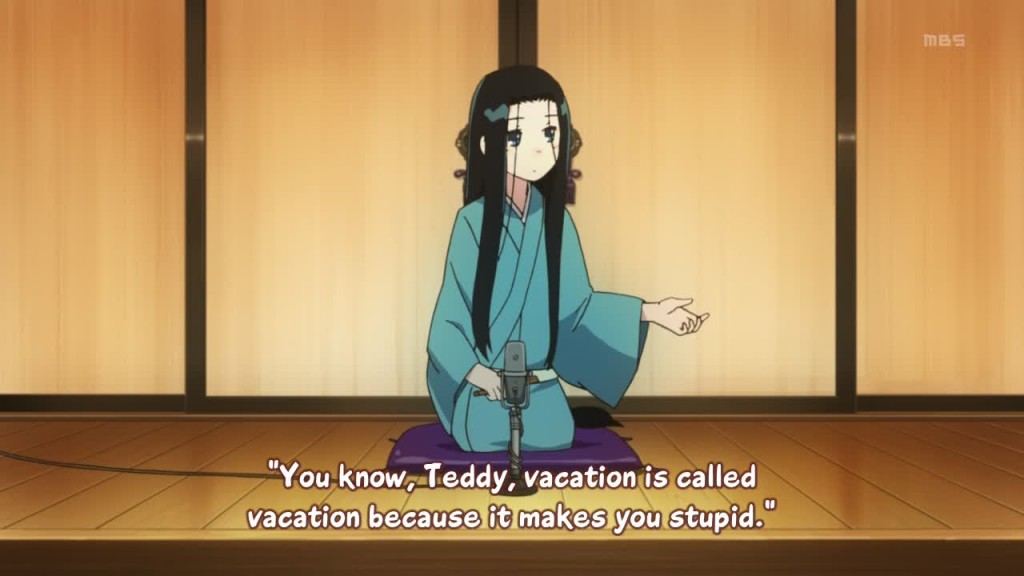

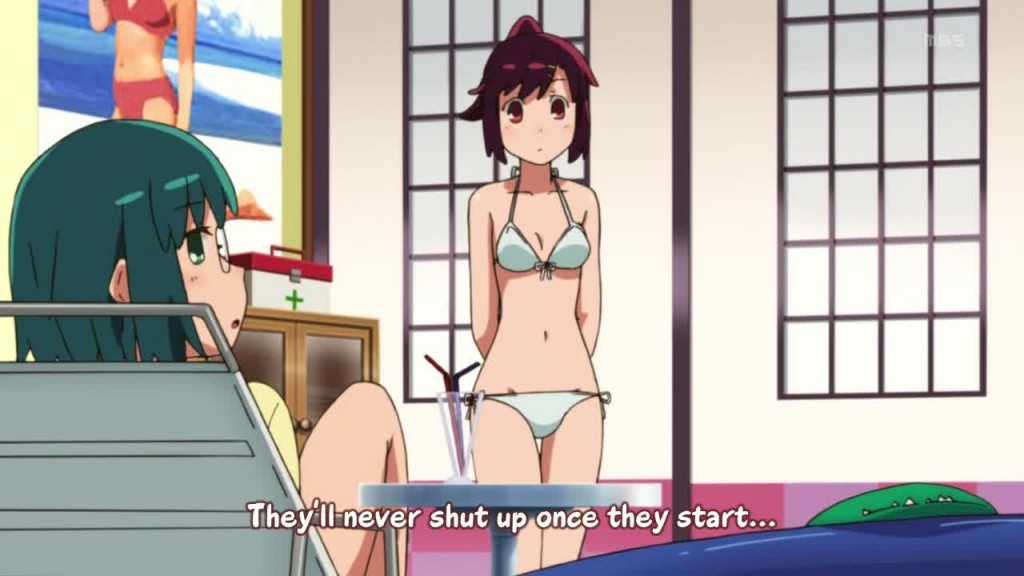


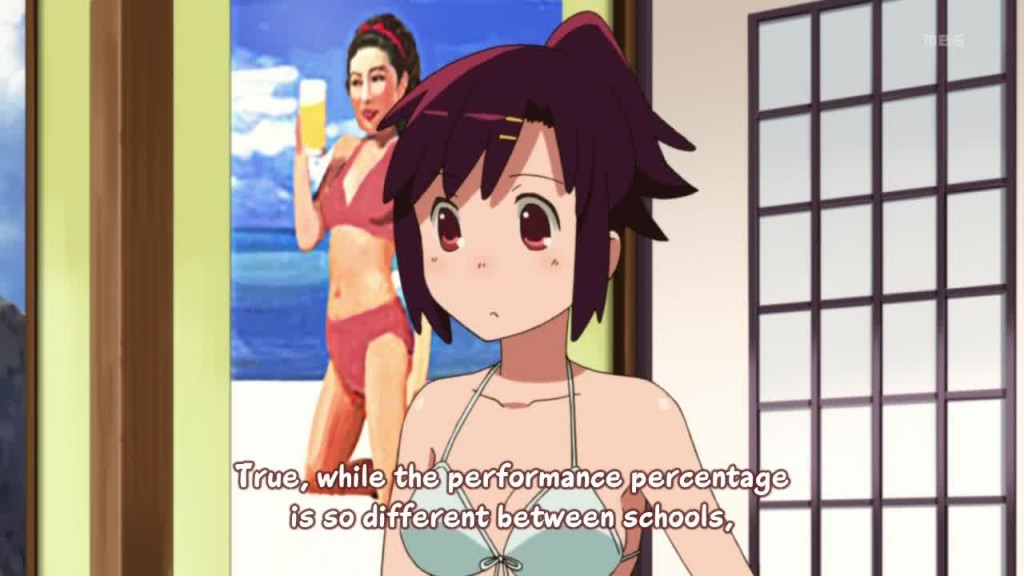
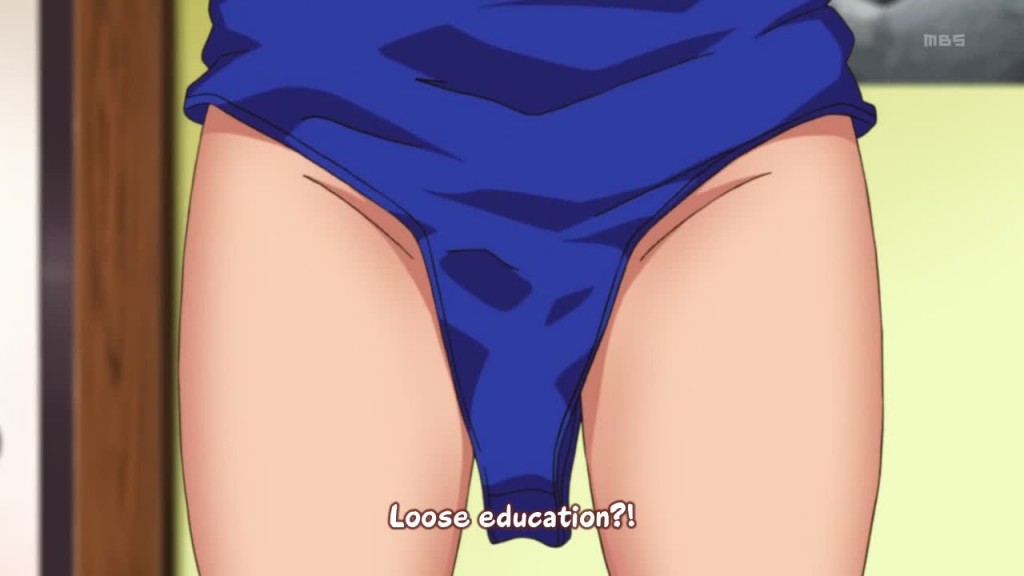
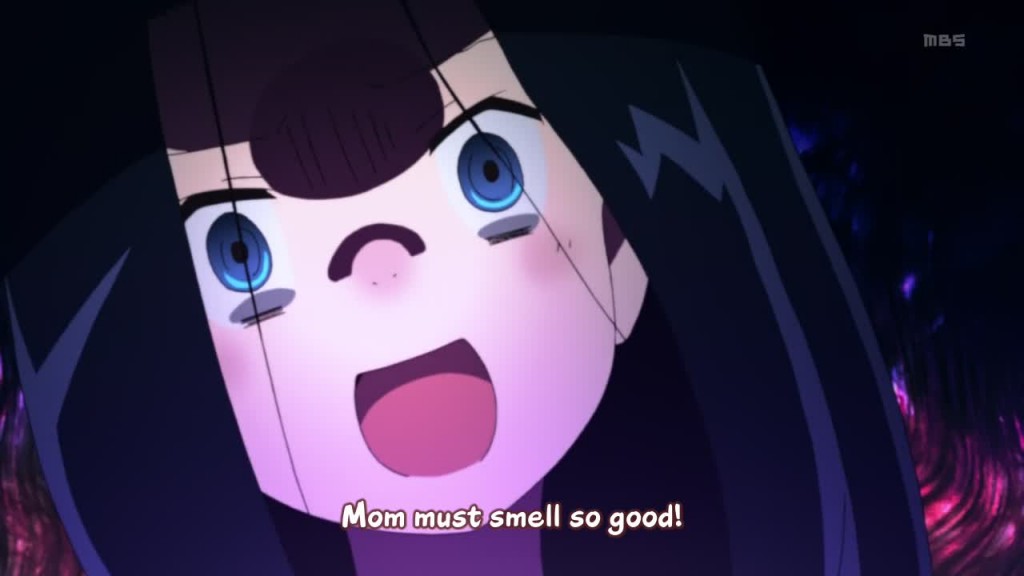
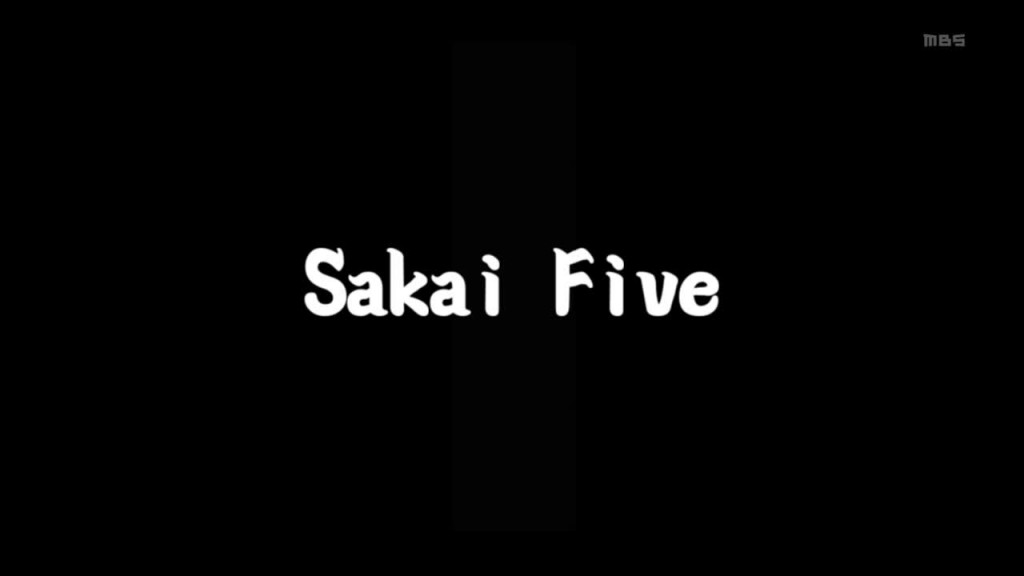
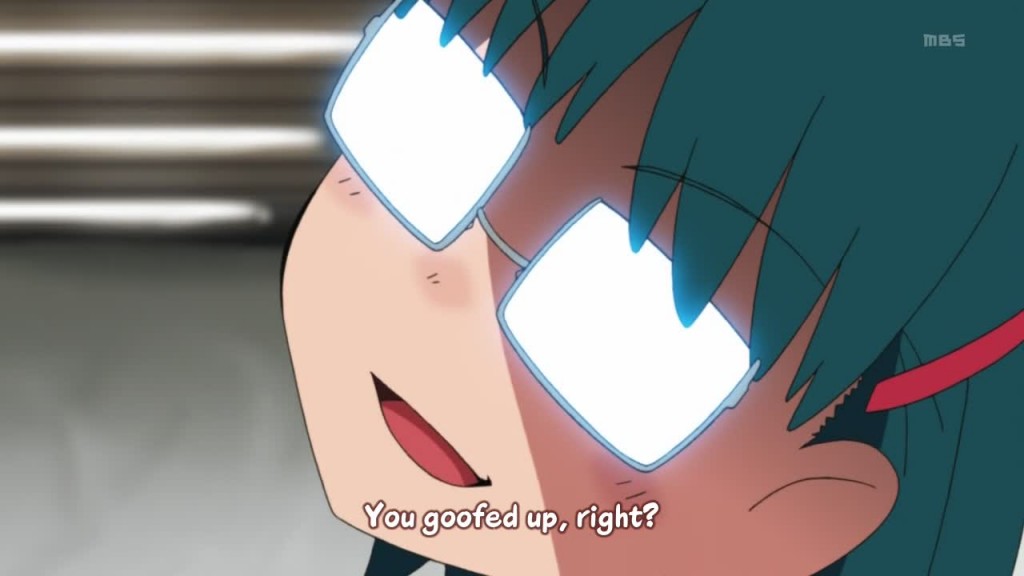
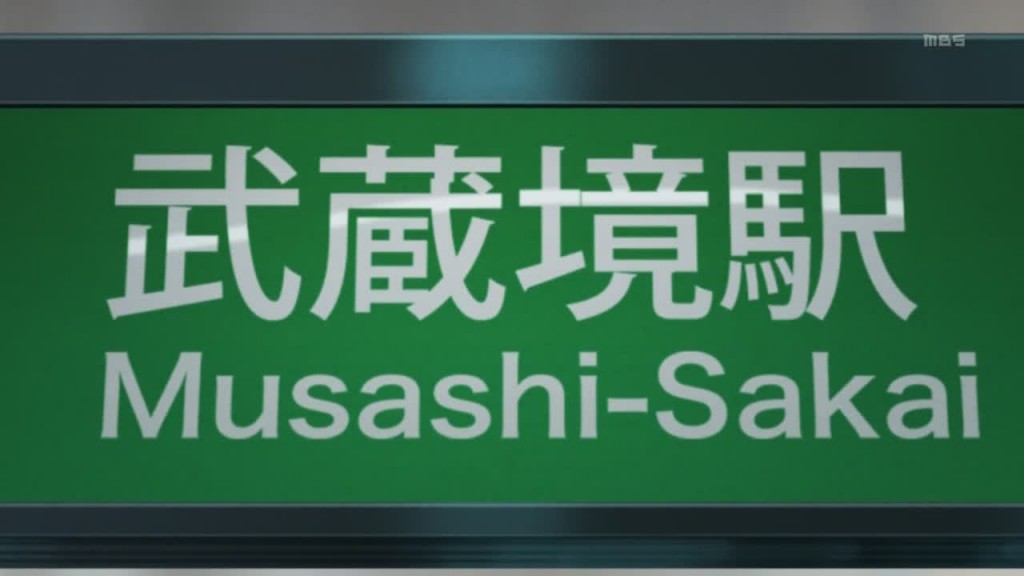
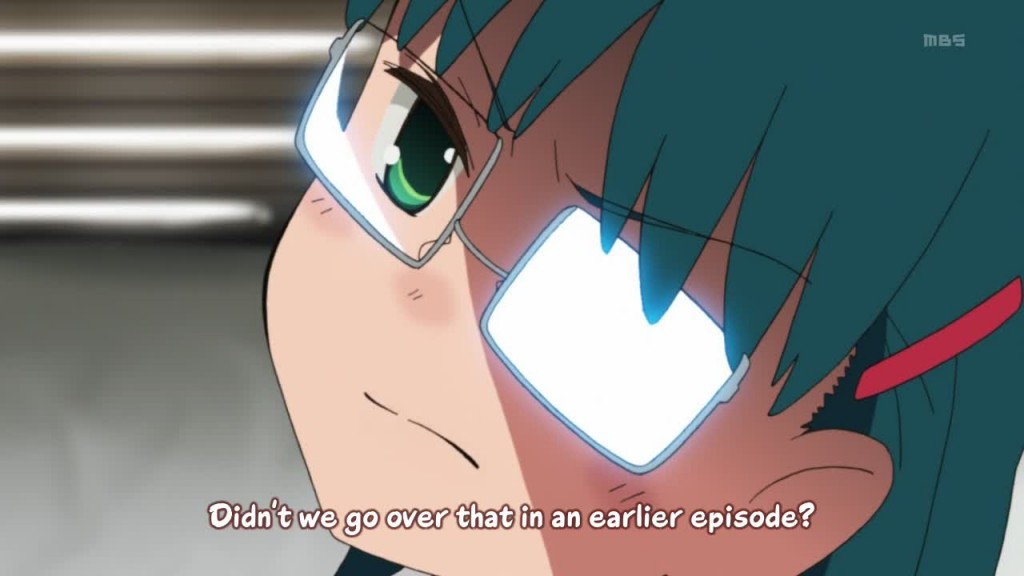
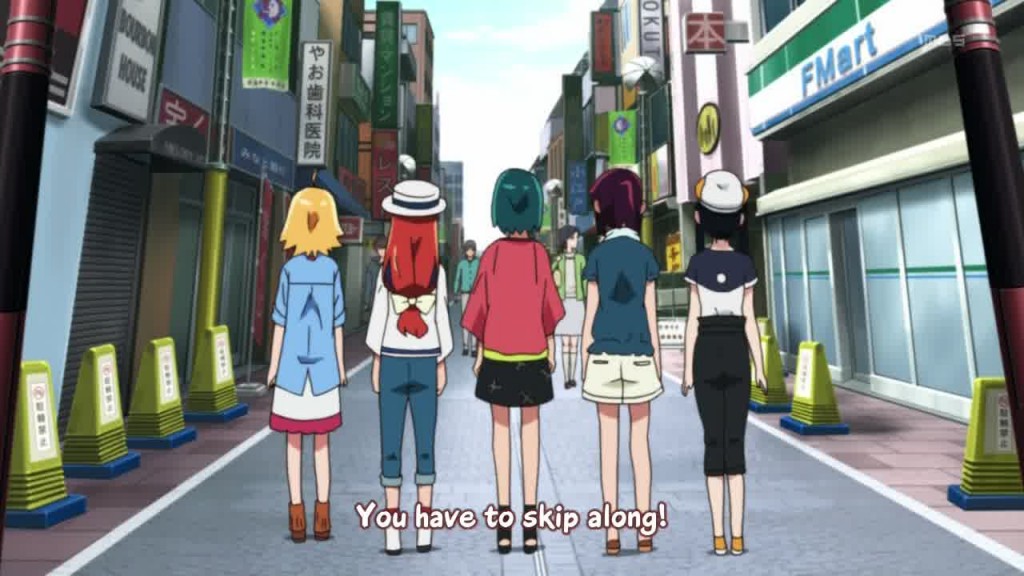
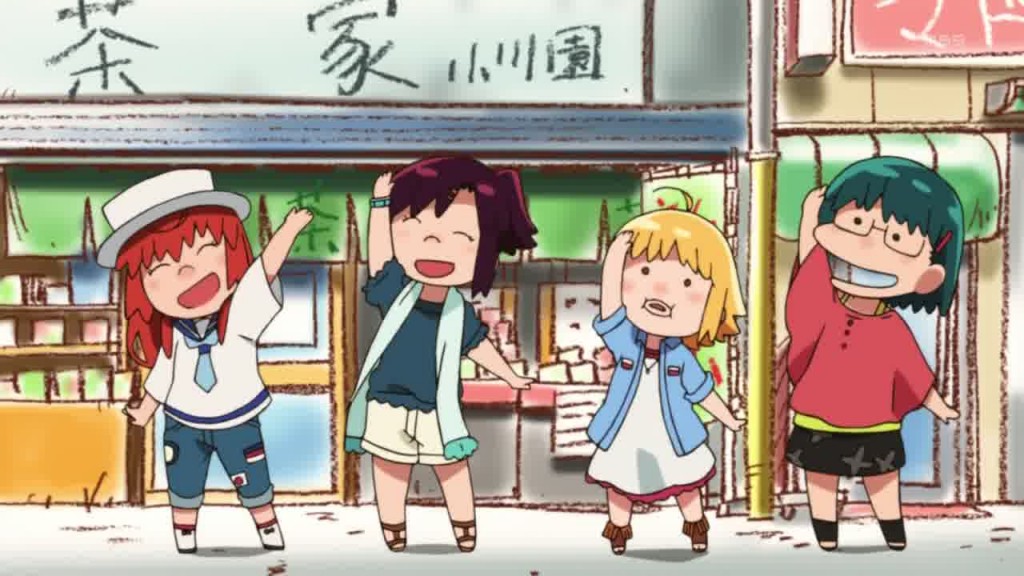
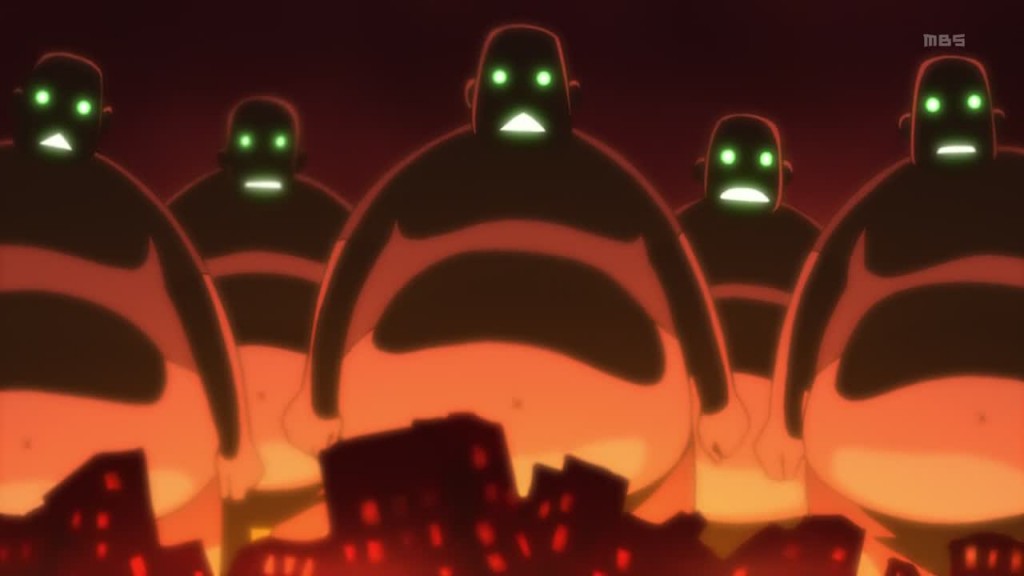
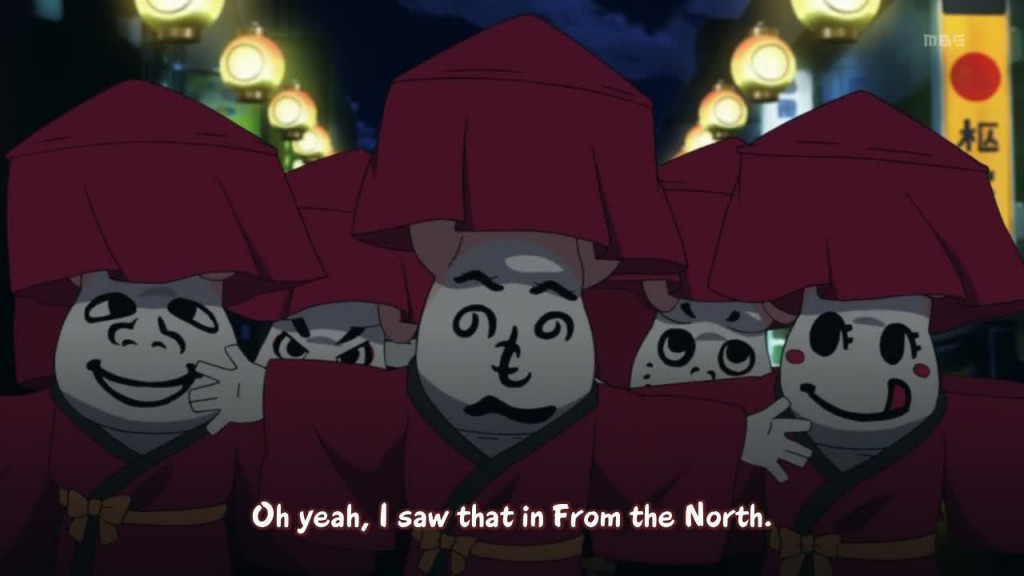
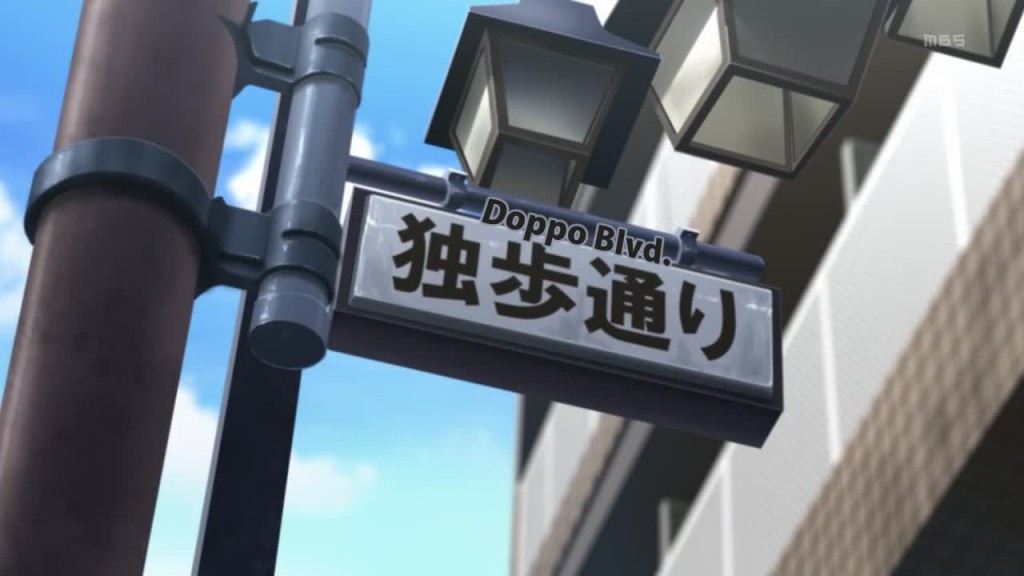
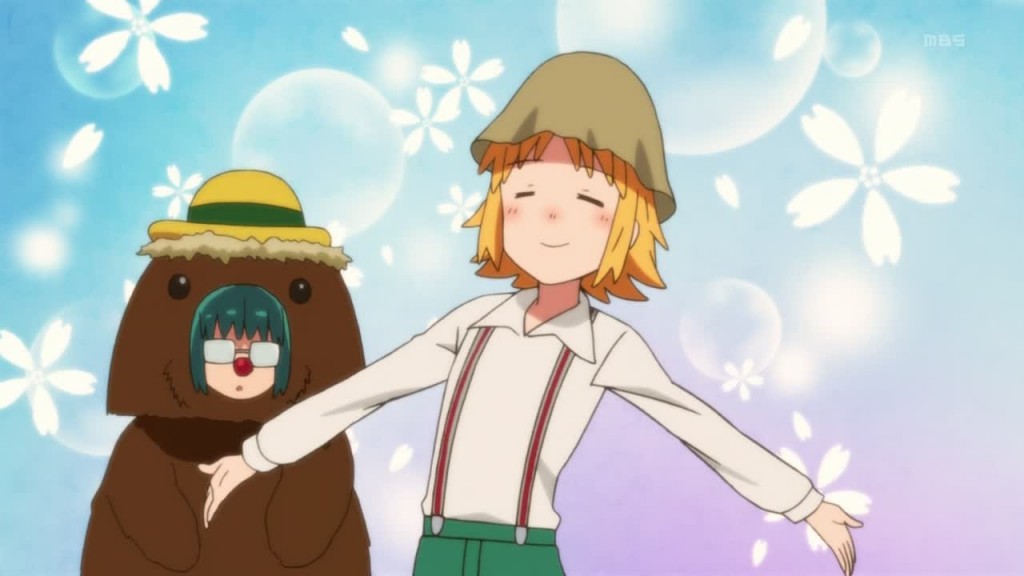
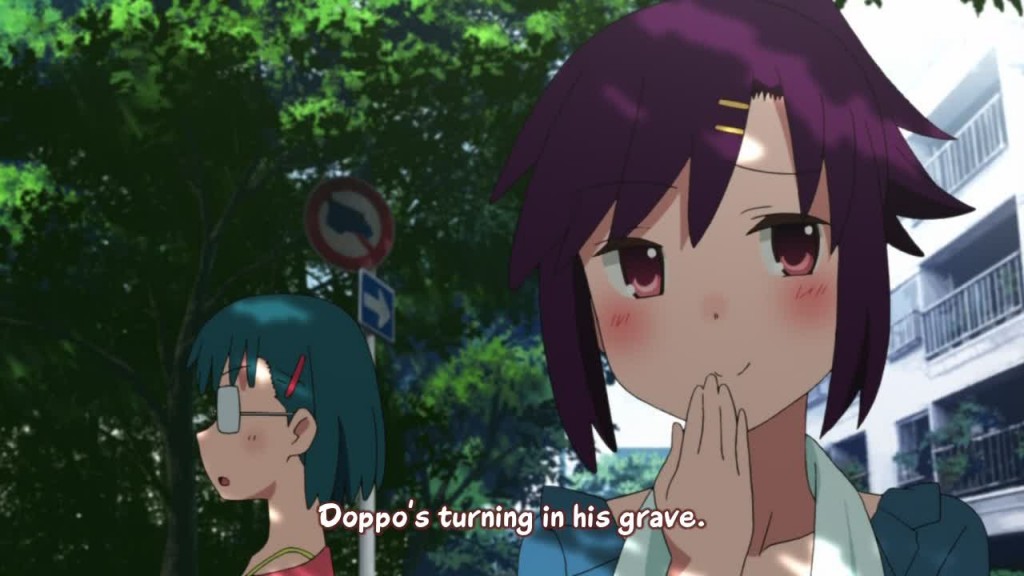
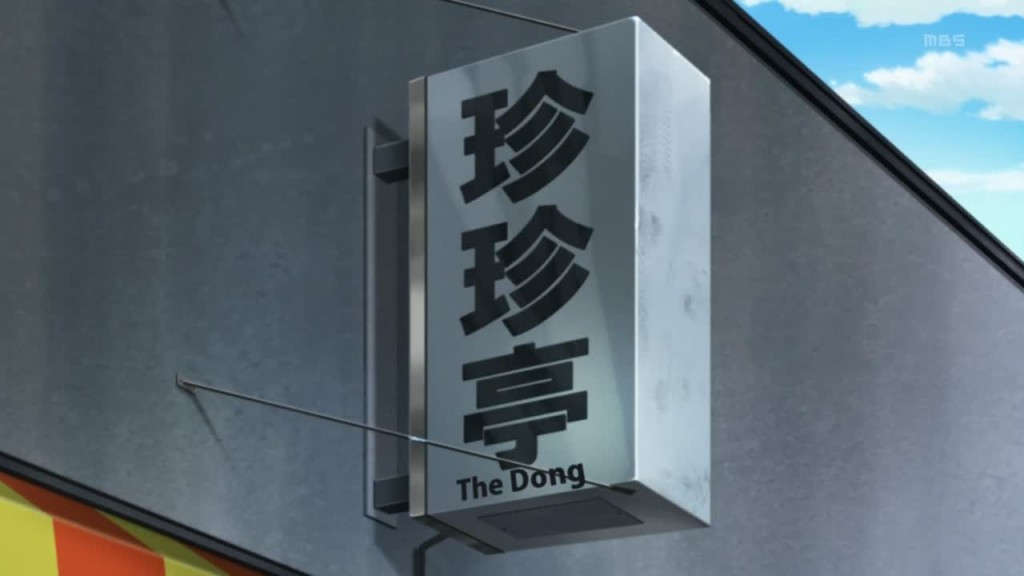
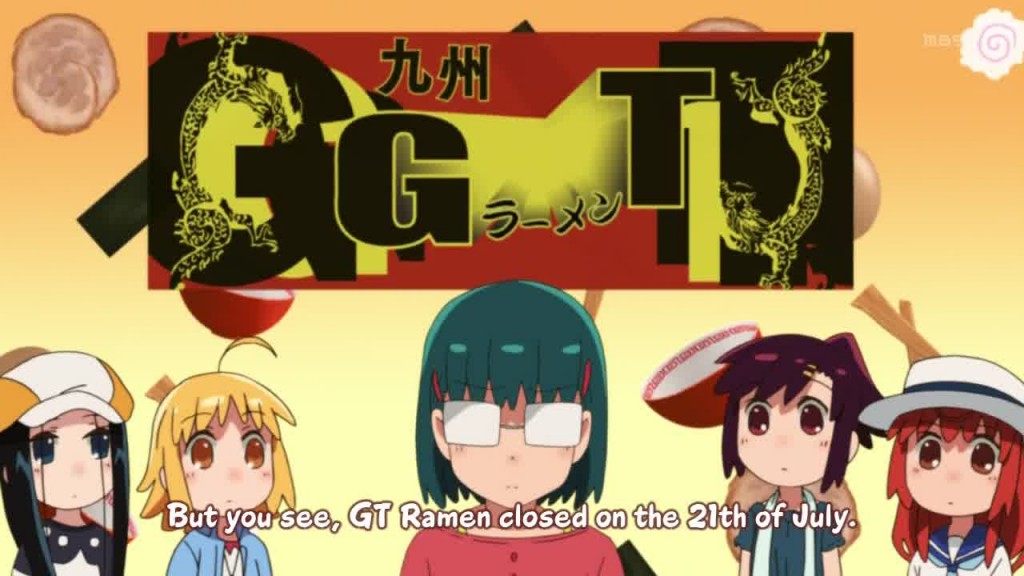

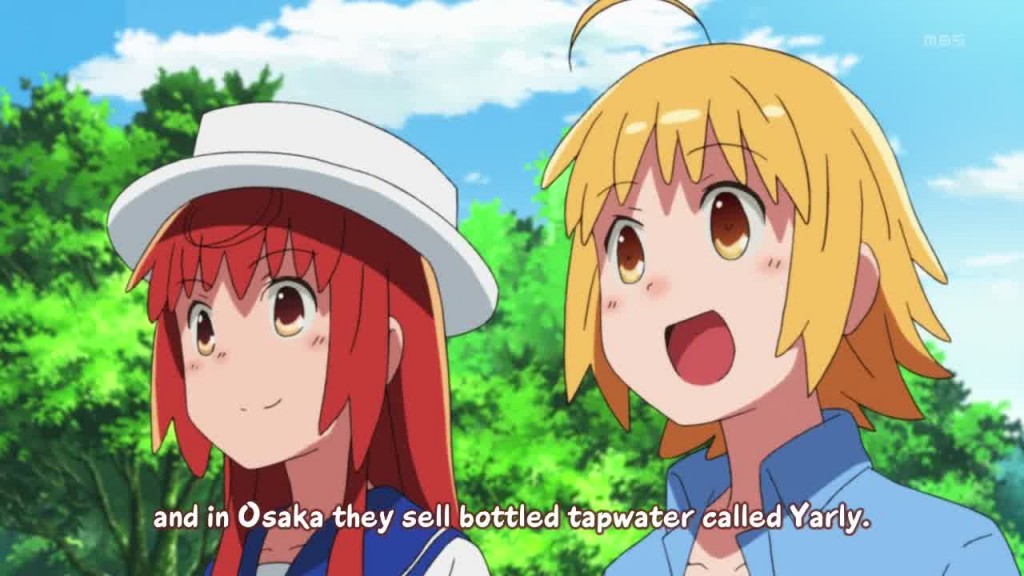
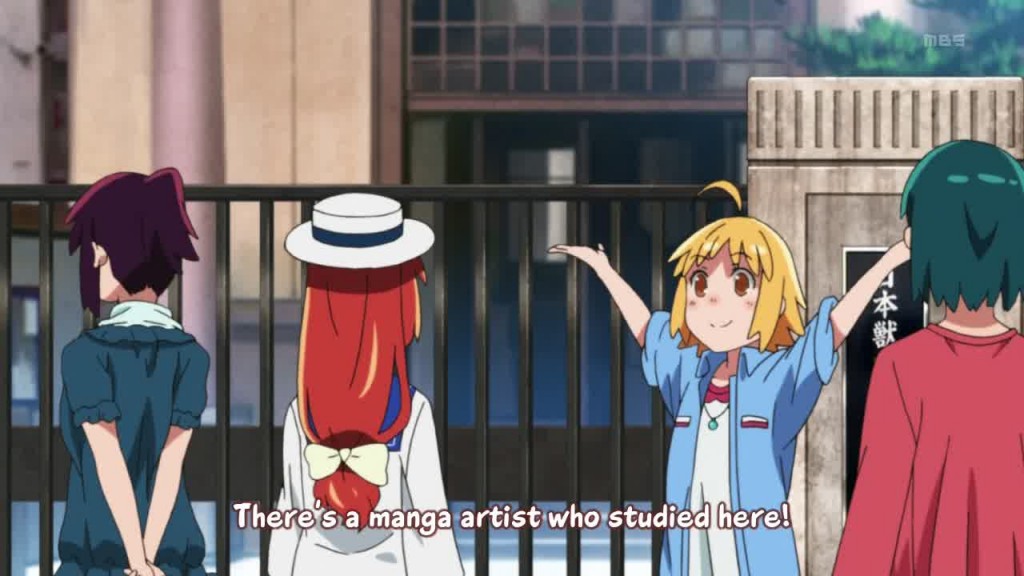
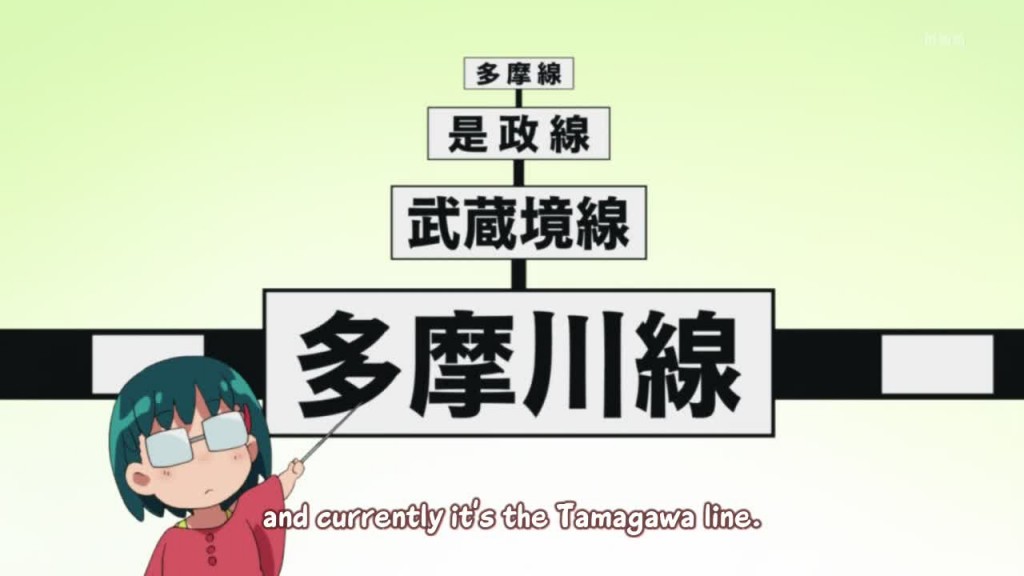
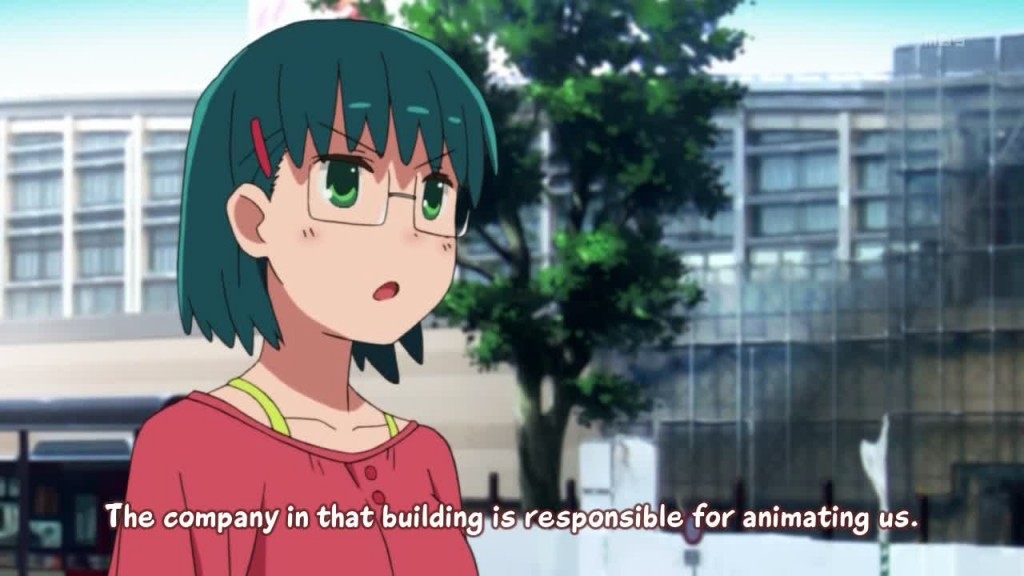
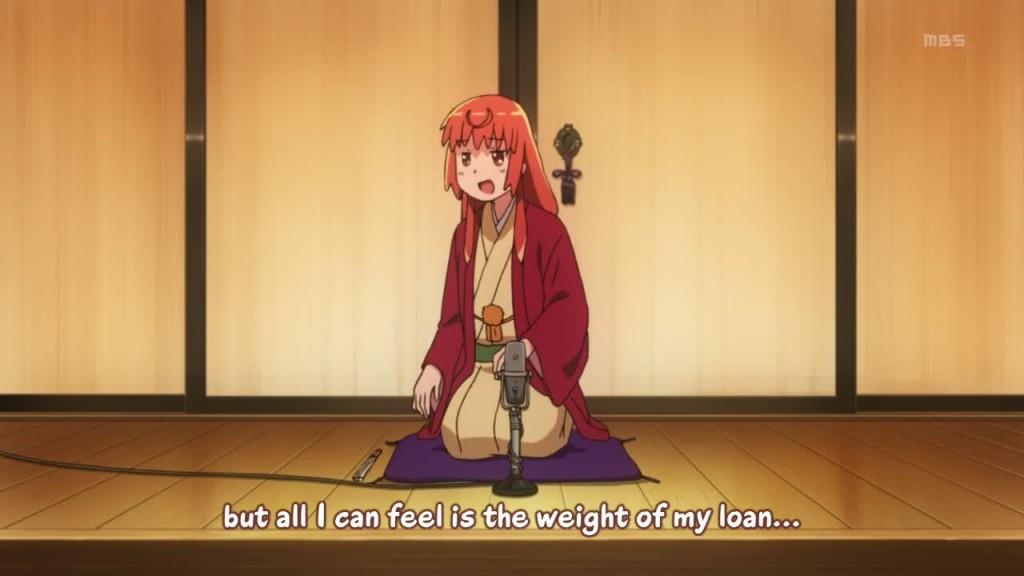
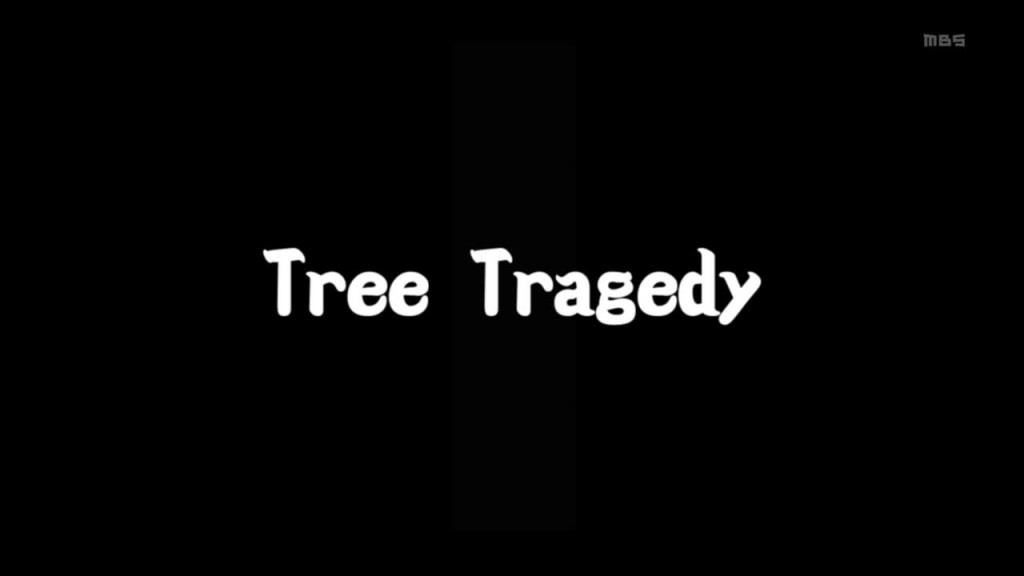
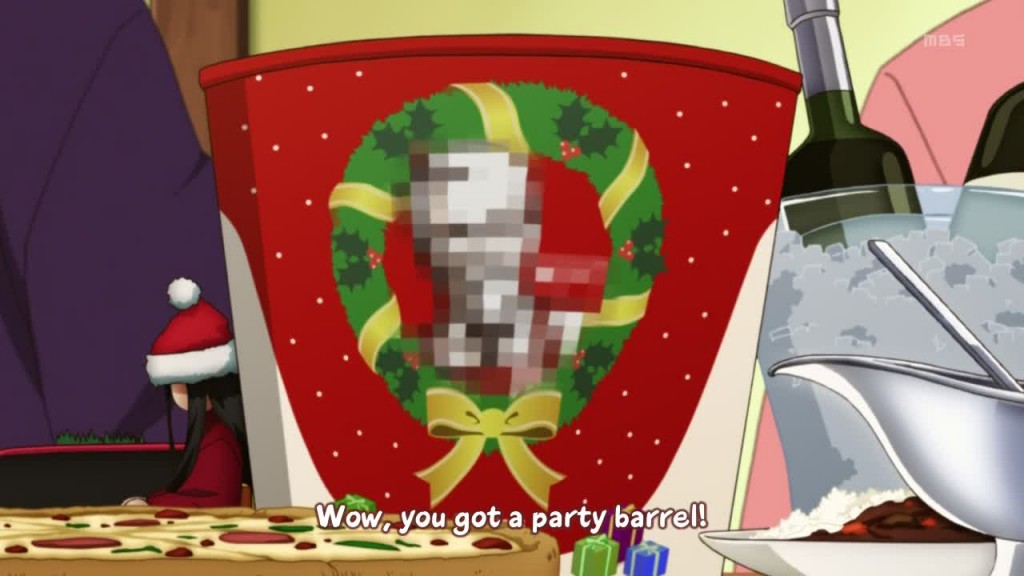
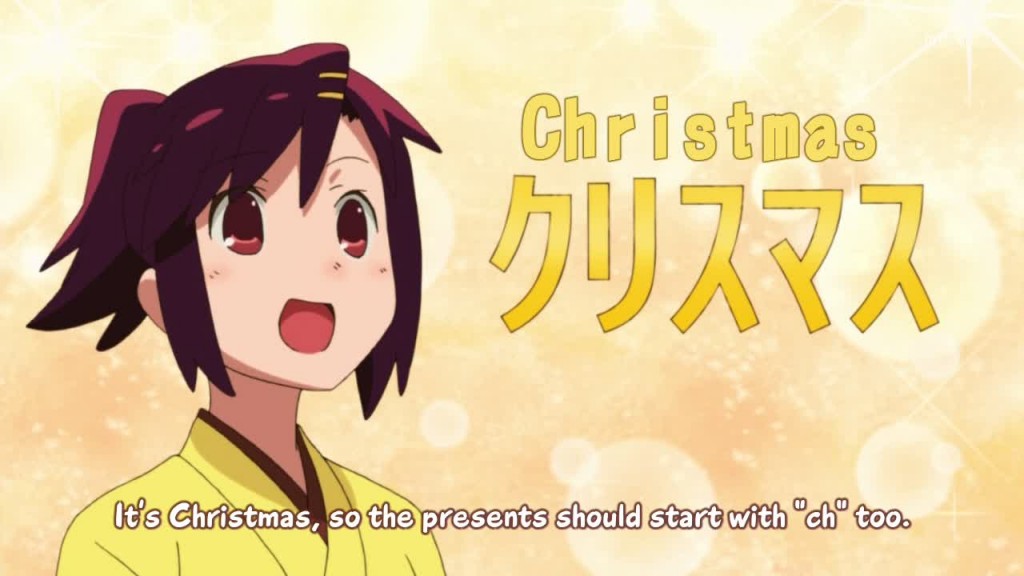
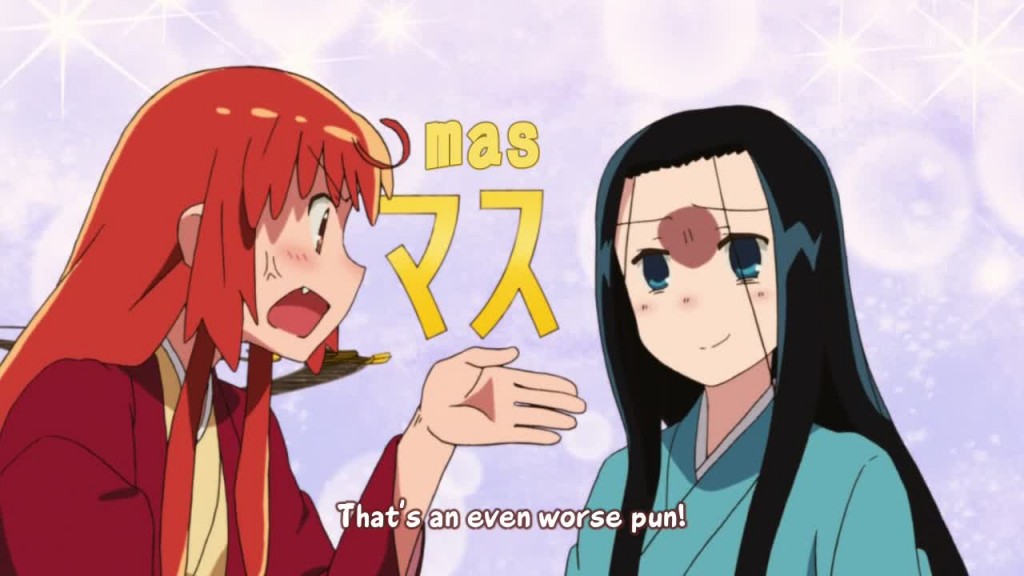
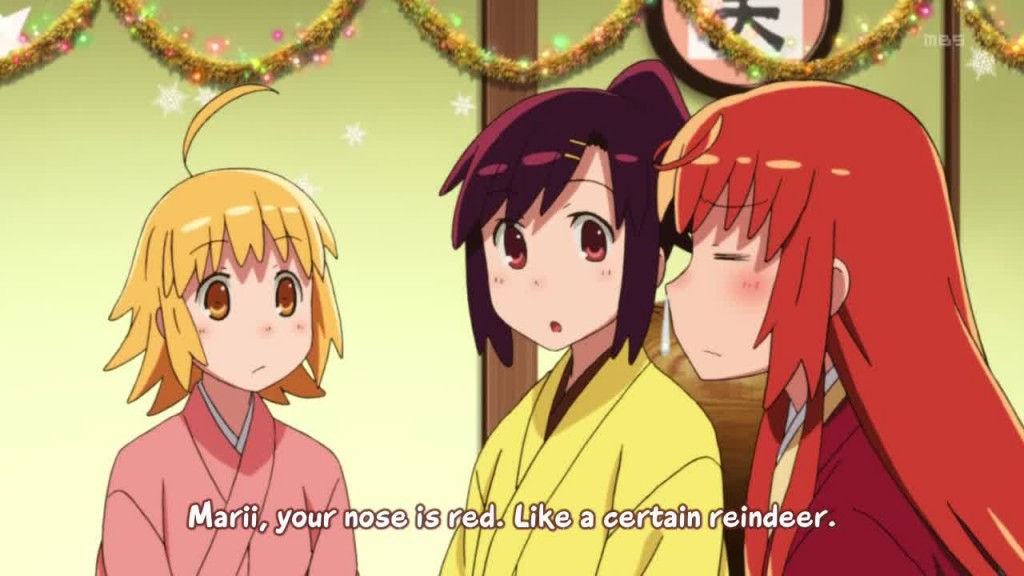
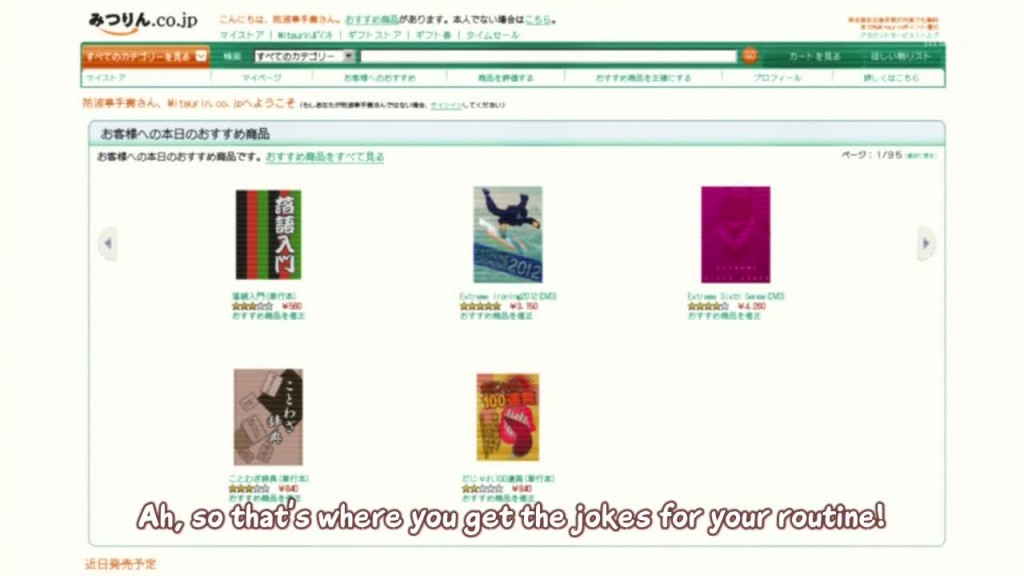
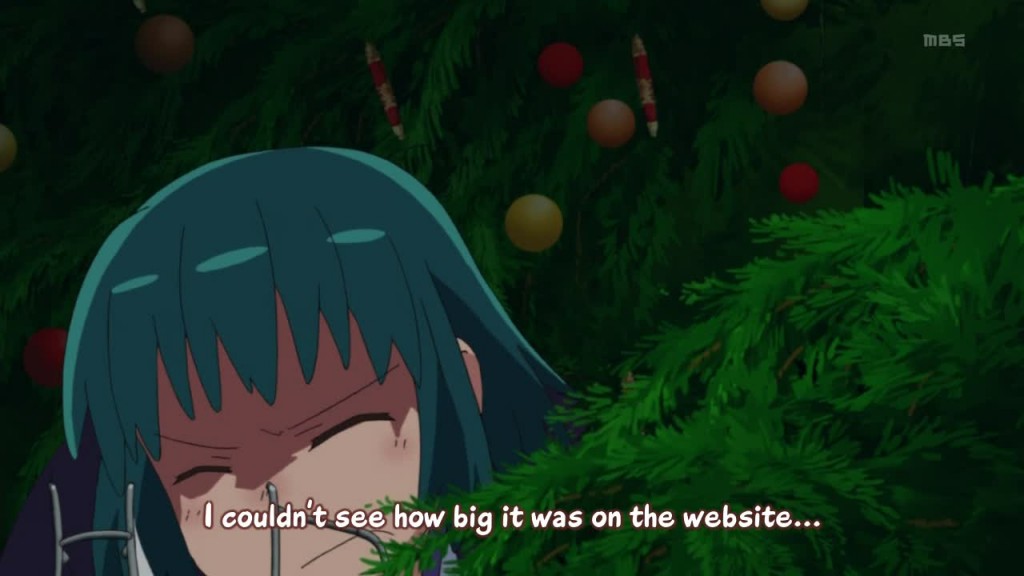
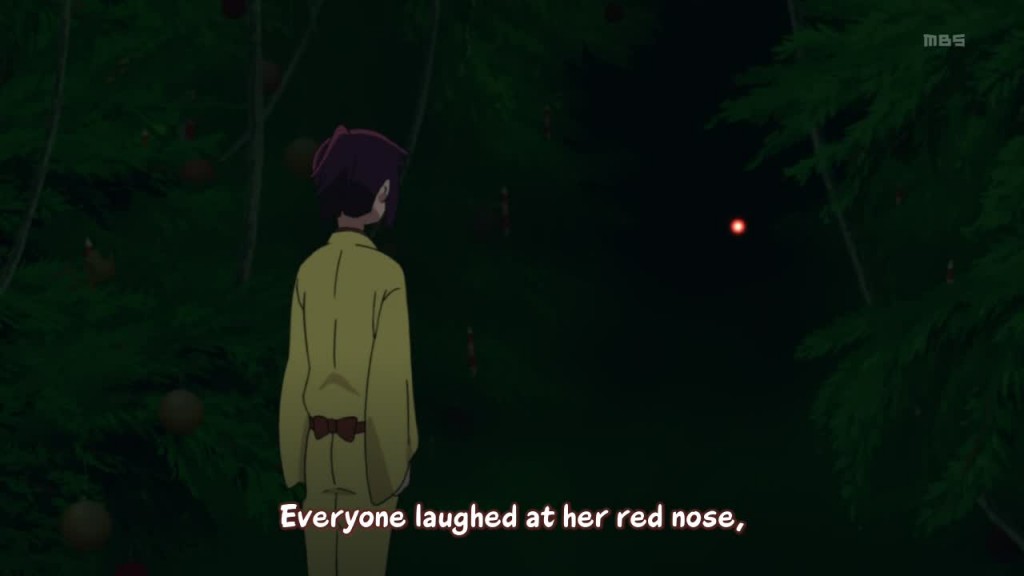
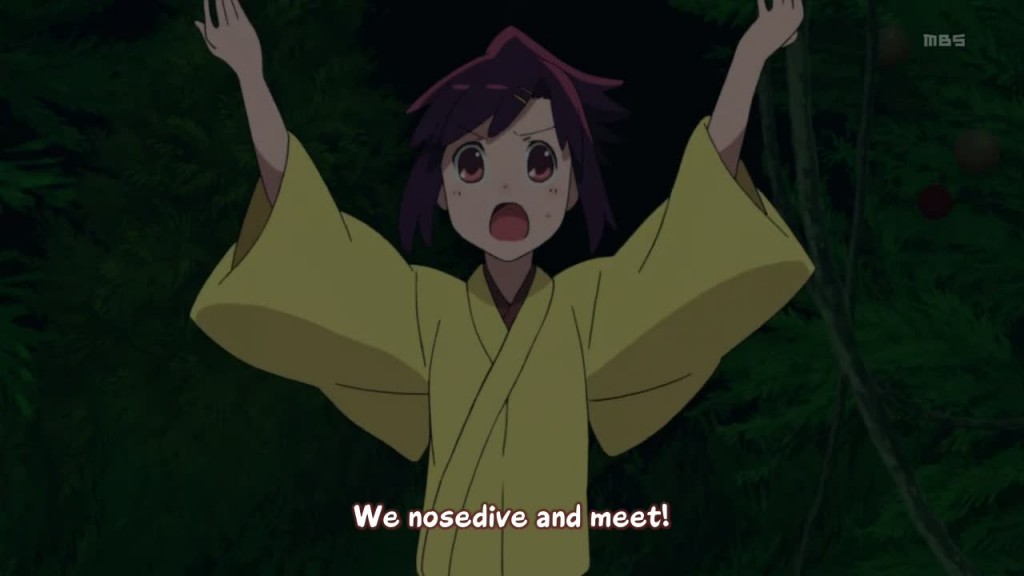
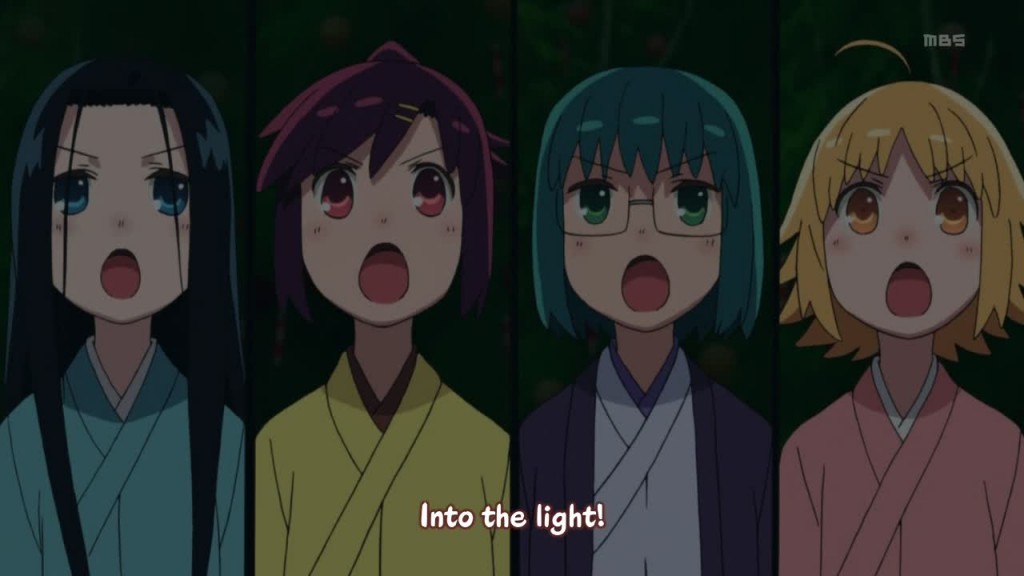
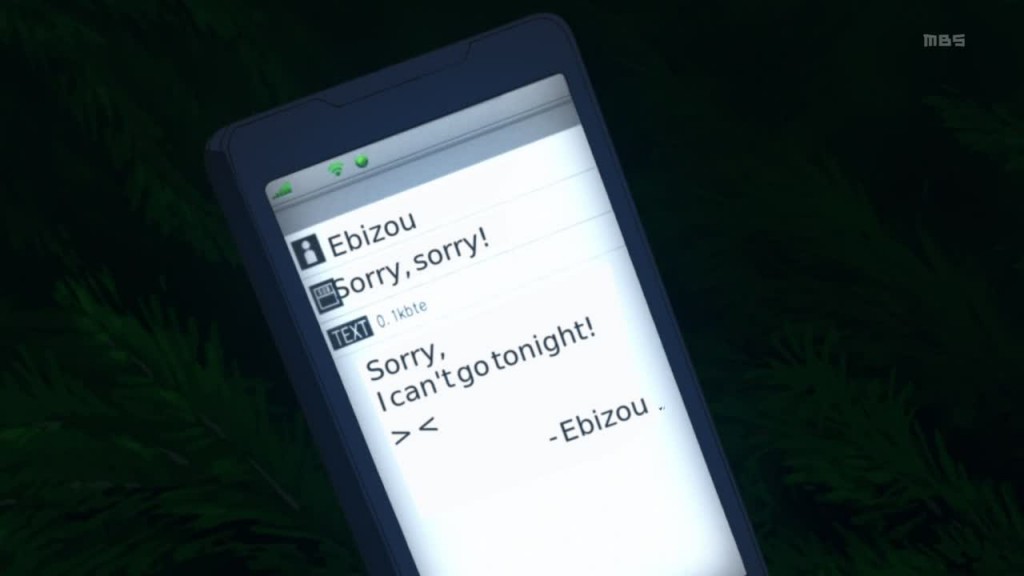

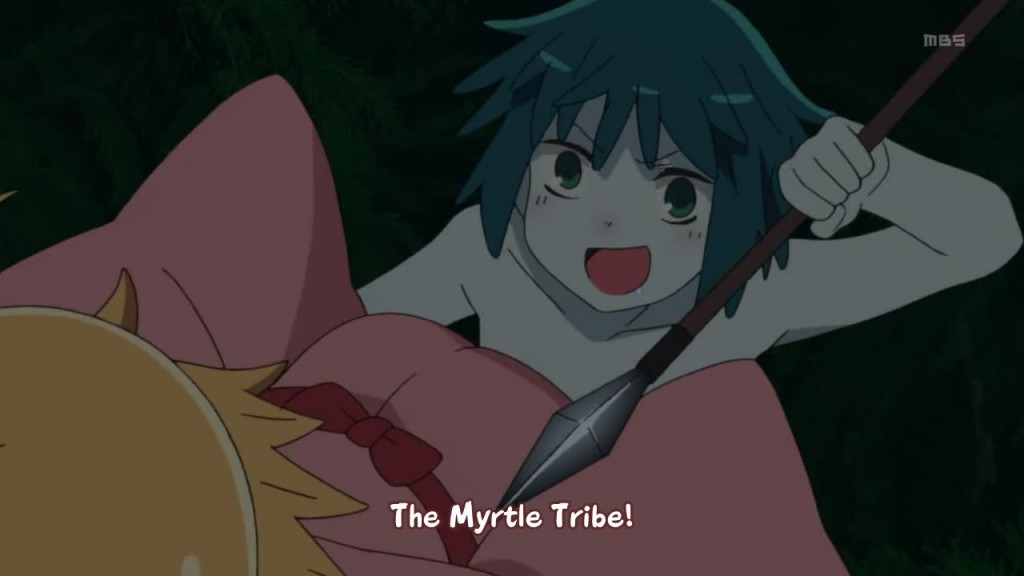
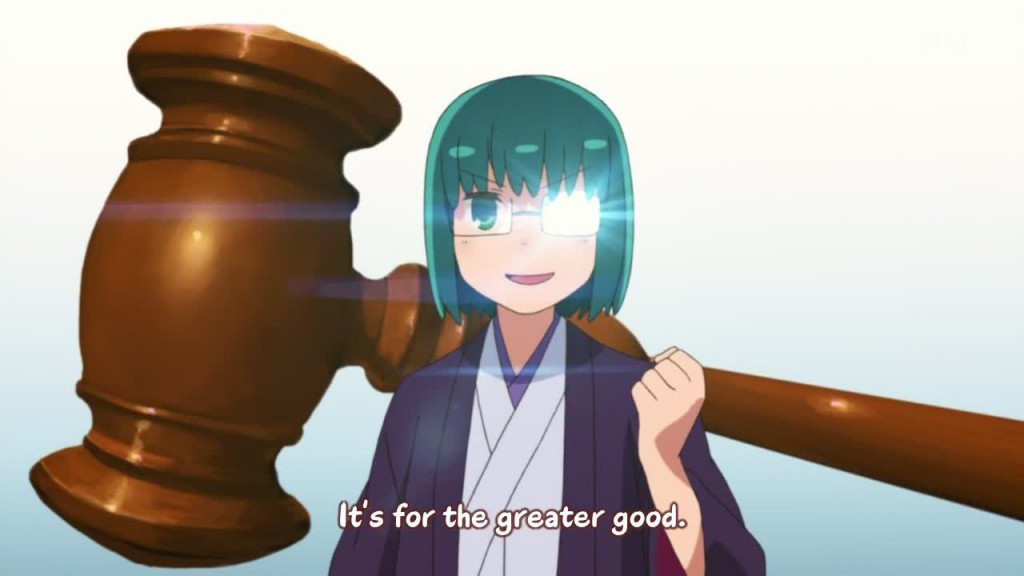
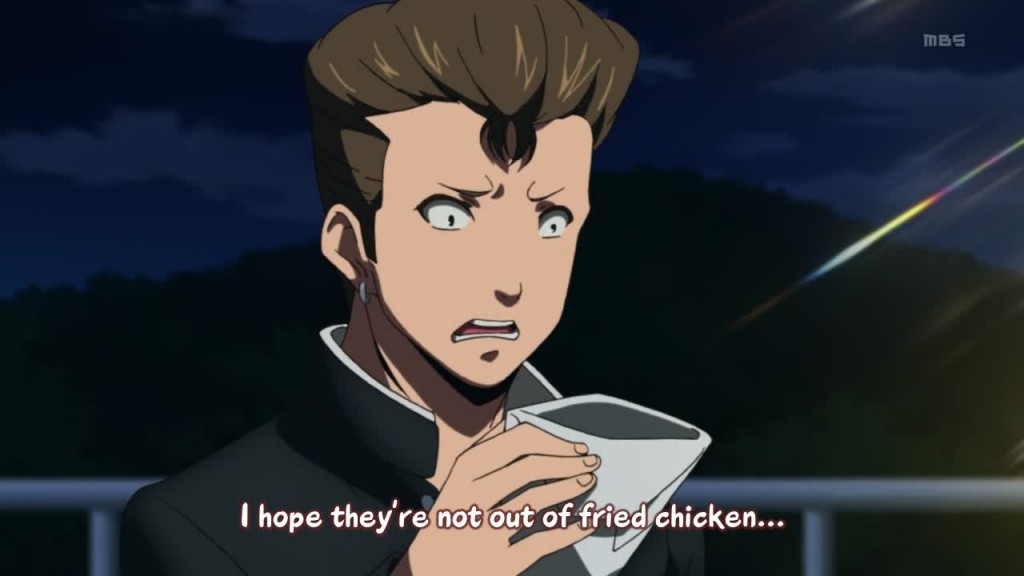
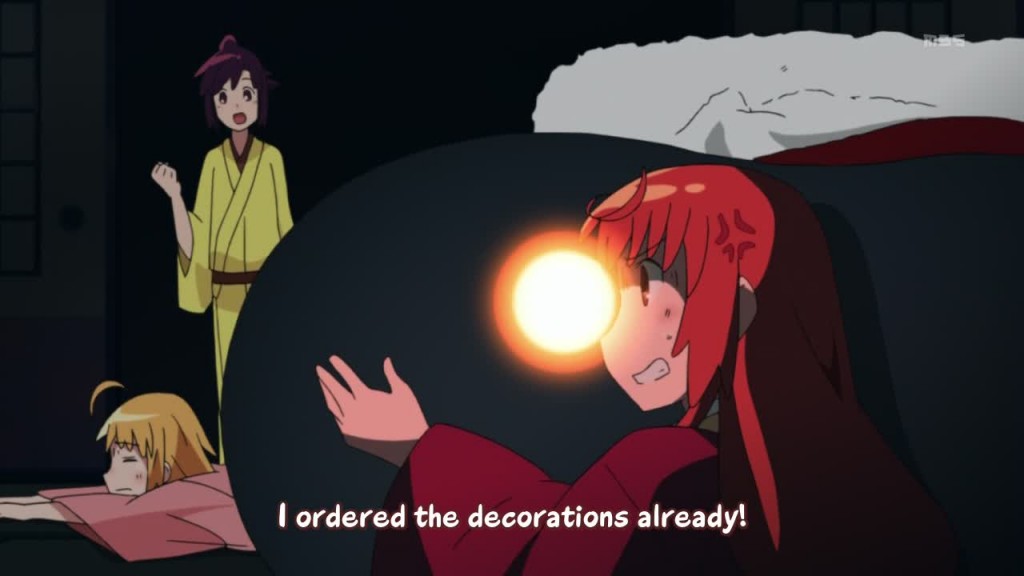
Thx for the note! ^__^v
Also…. I don’t know who’s Ebizou….
Refer to the notes for episodes 3, 5, 9 and 10.
About uniforms, I think first one is from Baka to Test to Shoukanjuu and one of the last is from Raildex (Misaka uniform).
Thank you for your work!
From Kigu’s Amazon recommendations, the first CD, The flood to the world, the cover is a zoomed in Arch Enemy’s Doomsday Machine http://www.nuclearblast.de/static/articles/130/130410.jpg/1000×1000.jpg
And the third one, …..oyal Palace, judging from the cover, it could really be Fuckingham Palace by Jack ill Dark from the manga/film/anime Detroit Metal City http://www.youtube.com/watch?v=8LCGxuFujdI
An regarding the last one, it could be Dimmu Borgir’s In Sorte Diaboli, but as many Black Metal bands like to use the Baphomet I’m not so sure on that one http://images.coveralia.com/audio/d/Dimmu_Borgir-In_Sorte_Diaboli-Frontal.jpg
>In Japan schools are ranked by academic performance based on the 偏差値 (hensachi, lit. standard score, in this context a performance indicator number). I don’t think it’s used anywhere outside Japan, and to be honest I have no idea how it’s calculated.
I know that in at least California, elementary to high schools use an at least similar system. Once a year they take a standardized, state-wide test and average each school scores, effectively ‘ranking’ them.
Yeah, kind of. But those standardized tests only “rank” the institutions themselves, and not the actual educational aptitude of their students. They “rank” students mostly based on GPA (I know because I live in California myself).
As a side note, GPA doesn’t translate directly to the so-called “hensachi.” The report card GPA is instead more similar to the “tsuuchihyou.”
@Vale
偏差値は平均と標準偏差を足して割り出します。
詳しくは、
http://ja.wikipedia.org/wiki/%E5%81%8F%E5%B7%AE%E5%80%A4
を参照してください。
This is coming years later but 密林 (jungle) is slang for amazon.com (or .co.jp). So, when they say “I got it from the jungle”, they mean “I got it from amazon.”
Thanks to gg for subbing this, and good job subbing such a difficult anime 😛 It was worth waiting 🙂 Had many laughs with this one again, d best episode so far, after the previous one ^^